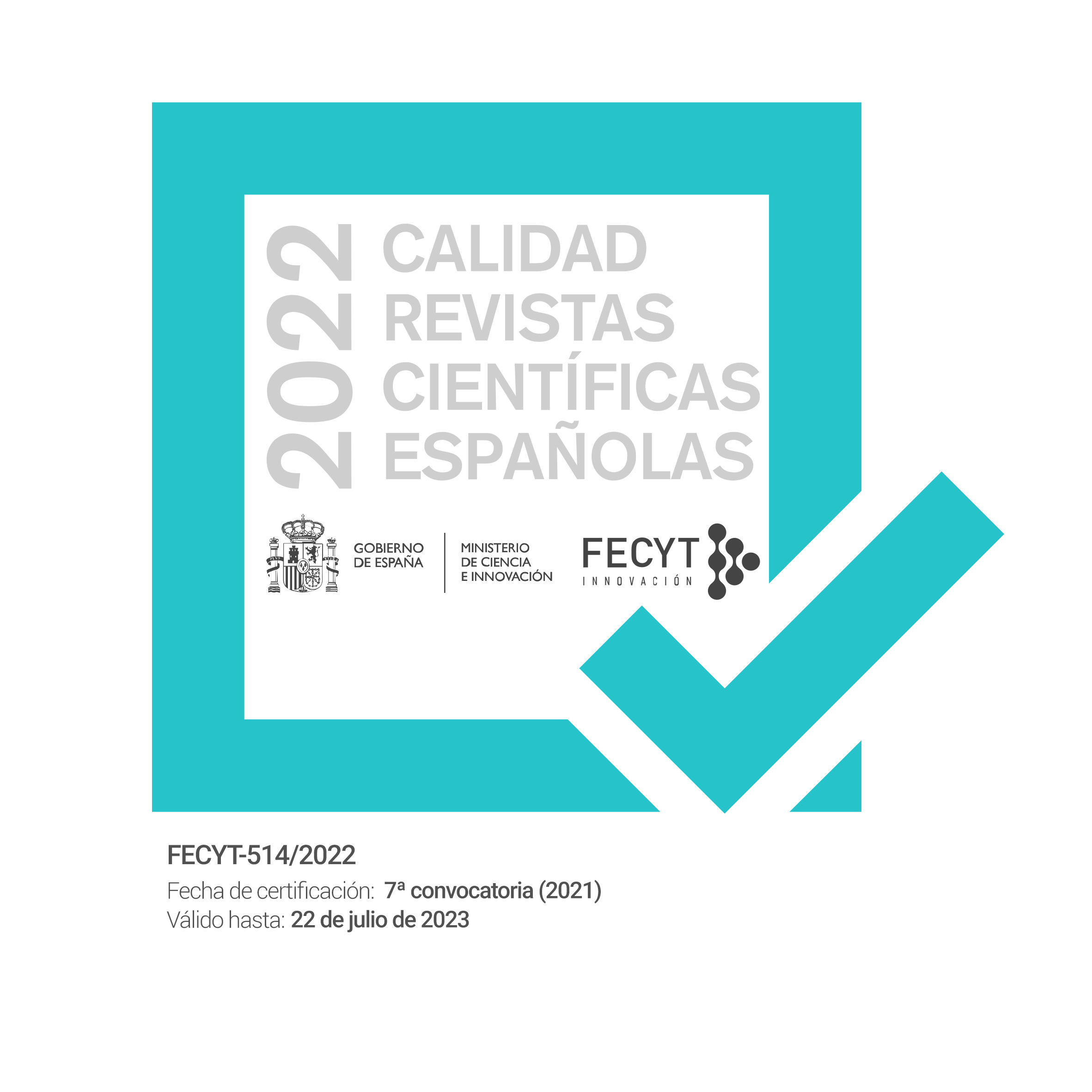MURIEL RUKEYSER’S THE BOOK OF THE DEAD AND THE REPRESENTATIONAL CHALLENGES OF SLOW VIOLENCE
DOI:
https://doi.org/10.12795/REN.2022.i26.07Palabras clave:
The Book of the Dead, Rubbish Theory, Waste Studies, Waste Theory, Muriel Rukeyser, Violencia lentaResumen
Los sucesos narrados por Muriel Rukeyser en The Book of the Dead (1938) constituyen un buen ejemplo de lo que Rob Nixon denomina “violencia lenta,” un tipo de violencia nada espectacular, de progresivo “desgaste”, que no es fácilmente trasladable una obra literaria. Este artículo estudia las estrategias usadas por Rukeyser para superar esos obstáculos a la hora de representar literariamente la “violencia lenta”: optando, primero, por un patchwork de géneros, eligiendo, además, la estructura peculiar del poema-secuencia y, por último, dando visibilidad al proceso de “wastification” o “basurización” de los mineros que protagonizan el poema. Leído desde la óptica de las recientes corrientes críticas conocidas como Waste Studies y Waste Theory, The Book of the Dead se erige como una de las primeras obras poéticas en examinar de forma conjunta la materialidad de los desechos tóxicos (polvo de sílice) y la “basurización” humana (Rubbish Theory).
Descargas
Citas
ALTMAN, M. “Muriel Rukeyser’s the ‘Book of the Dead.’” Tulsa Studies in Women’s Literature, vol. 23, no. 1, 2004, pp. 146-148, https://doi.org/10.2307/20455181
ARMIERO, Marco. Wasteocene: Stories from the Global Dump. Cambridge Elements, 2021.
BARNAT, Dara. “‘Women and Poets See the Truth Arrive’: Muriel Rukeyser and Walt Whitman.” Studies in American Jewish Literature (1981-), vol. 34, no. 1, 2015, pp. 94–116, https://doi.org/10.5325/studamerjewilite.34.1.0094.
BAUMAN, Zygmunt. Wasted Lives: Modernity and its Outcasts. Polity Press, 2004.
BELL, Lucy. “Place, People and Processes in Waste Theory: A Global South Critique.” Cultural Studies vol. 33, no. 1, 2019, pp. 98-121, https://doi.org/10.1080/09502386.2017.1420810
BRINNIN, John Malcolm. “Muriel Rukeyser: The Social Poet and the Problem of Communication.” Poetry, vol. 61, no. 4, Poetry Foundation, 1943, pp. 554–75, http://www.jstor.org/stable/20583291.
BULLARD, Robert D. Dumping in Dixie: Race, Class, and Environmental Quality. Routledge, (1990) 2019.
CARELESS, Eleanor. “Muriel Rukeyser and the Security of the Imagination: Poetry and Propaganda in 1940s America.” Modernist Cultures, vol. 14, no. 4, 2019, pp. 421-445, https://doi.org/10.3366/mod.2019.0266
CHERNIACK, Martin. The Hawk’s Nest Incident: America’s Worst Industrial Accident. Yale University Press, 1986.
DAYTON, Tim. “Lyric and Document in Muriel Rukeyser’s ‘The Book of the Dead.’” Journal of Modern Literature, vol. 21, no. 2, Indiana University Press, 1997, pp. 223–40, http://www.jstor.org/stable/3831461
DOWDY, Michael. “Shakeout Poetics: Documentary Poetry from Men of Fact to Data Bodies.” College Literature: A Journal of Critical Literary Studies, vol. 47, no. 1, 2020, pp. 155–84.
GARDINIER, Suzanne. “‘A World That Will Hold All the People’: On Muriel Rukeyser.” The Kenyon Review, vol. 14, no. 3, Kenyon College, 1992, pp. 88–105, http://www.jstor.org/stable/4336719.
GOODMAN, Jenny. “‘Presumption’ and ‘Unlearning’: Reading Muriel Rukeyser’s the ‘Book of the Dead’ as a Woman’s American Epic.” Tulsa Studies in Women’s Literature, vol. 25, no. 2, 2006, pp. 267-289, https://doi.org/10.2307/20455282
GREEN, Chris. “Working Truth Inside and Out: Don West, Muriel Rukeyser, Poetry, and the Popular Front in Appalachia, 1932-1948.” Journal of Appalachian Studies, vol. 8, no. 2, 2002, pp. 382–406, http://www.jstor.org/stable/41446548.
GREEN, Chris. The Social Life of Poetry: Appalachia, Race, and Radical Modernism. Palgrave Macmillan, 2009, pp.161-198.
GRIEVE, Sarah. “Environmental Justice Witnessing in Muriel Rukeyser’s The Book of the Dead.” ISLE-Interdisciplinary Studies in Literature and Environment, vol. 26, no. 4, 2019, pp. 968-1005, https://doi.org/10.1093/isle/isz021.
HOLLENBERG, Donna Krolik. “Witness to Her Age.” The Women’s Review of Books, vol. 17, no. 5, 2000, pp. 10–11, https://doi.org/10.2307/4023317.
KALAIDJIAN, Walter. “Muriel Rukeyser and the Poetics of Specific Critique: Rereading ‘The Book of the Dead.’” Cultural Critique, no. 20, 1991, pp. 65–88, https://doi.org/10.2307/1354223.
KERTESZ, Louise. The Poetic Vision of Muriel Rukeyser. Louisiana State UP, 1980. https://archive.org/details/poeticvisionofmu00kert
MOORE, Catherine Venable. Introduction to Rukeyser’s The Book of the Dead, West Virginia University Press pp.1-59, 2018.
MORRISON, Susan Signe. “Waste Aesthetics: Form as Restitution.” ISLE: Interdisciplinary Studies in Literature and the Environment vol. 20, no. 3, 2013, pp. 464-478
NAVAS, Grettel, Giacomo D’Alisa, and Joan Martínez-Alier, “The role of working-class communities and the slow violence of toxic pollution in environmental health conflicts.” Global Environmental Change, vol. 73, March 2022, pp. 1-13. https://doi.org/10.1016/j.gloenvcha.2022.102474.
NIXON, Rob. Slow Violence and the Environmentalism of the Poor. Harvard University Press, 2011.
PARKS, Justin. “Toward a Resource Poetics in Muriel Rukeyser’s Book of the Dead and Mark Nowak’s Coal Mountain Elementary.” Textual Practice, vol. 35, no. 3, Mar. 2021, pp. 395–412.
ROSNER, David, and Gerald Markowitz. Deadly Dust: Silicosis and the Politics of Occupational Disease in Twentieth-Century America. Princeton UP, 1991.
RUDNITSKY, Lexi. “Planes, Politics, and Protofeminist Poetics: Muriel Rukeyser’s ‘Theory of Flight’ and ‘The Middle of the Air.’” Tulsa Studies in Women’s Literature, vol. 27, no. 2, 2008, pp. 237–57, https://doi.org/10.2307/20541064.
RUKEYSER, Muriel (1938). The Book of the Dead. West Virginia University Press, 2018.
RUKEYSER, Muriel. “Sand Quarry.” Poetry, vol. 47, no. 1, 1935, pp. 25–26, https://www.poetryfoundation.org/poetrymagazine/browse?volume=47&issue=1&page=38
SCIGAJ, Leonard M. “Ecology, Egyptology, and Dialectics in Muriel Rukeyser’s ‘The Book of the Dead.’” Mosaic: An Interdisciplinary Critical Journal, vol. 38, no. 3, 2005, pp. 131–47, http://www.jstor.org/stable/44029674
SIMAL-GONZÁLEZ, Begoña. “The waste of the empire”: Neocolonialism and environmental justice in Merlinda Bobis’s “The Long Siesta as a Language Primer.” Journal of Postcolonial Writing, vol. 55, no. 2, 2019, pp. 209-222, https://doi.org/10.1080/17449855.2019.1590633
SLATER, Avery. “American Afterlife: Benjaminian Messianism and Technological Redemption in Muriel Rukeyser’s The Book of the Dead.” American Literature, vol. 86, no. 4, 2014, pp. 767-797, https://doi.org/10.1215/00029831-2811802.
TALES, Bryn. “Salvaging the Symbol in Muriel Rukeyser’s The Book of the Dead.” Comparative Critical Studies, vol. 14, no. 2-3, 2017, pp. 323-346, https://doi.org/10.3366/ccs.2017.0242
THOMPSON, Michael. (1979, 2017). Rubbish Theory; The Creation and Destruction of Value. Pluto Press
WARE, M. S. “Opening the ‘Gates’, Muriel Rukeyser and the Poetry of Witness.” Women’s Studies: An Interdisciplinary Journal, vol. 22, no. 3, 1993, pp. 297-308, https://doi.org/10.1080/00497878.1993.9978983.
WECHSLER, Shoshana. “A Ma(t)ter of Fact and Vision: The Objectivity Question and Muriel Rukeyser’s The Book of the Dead.” Twentieth Century Literature, vol. 45, no. 2, 1999, pp. 121-137. https://doi.org/10.2307/441826.






